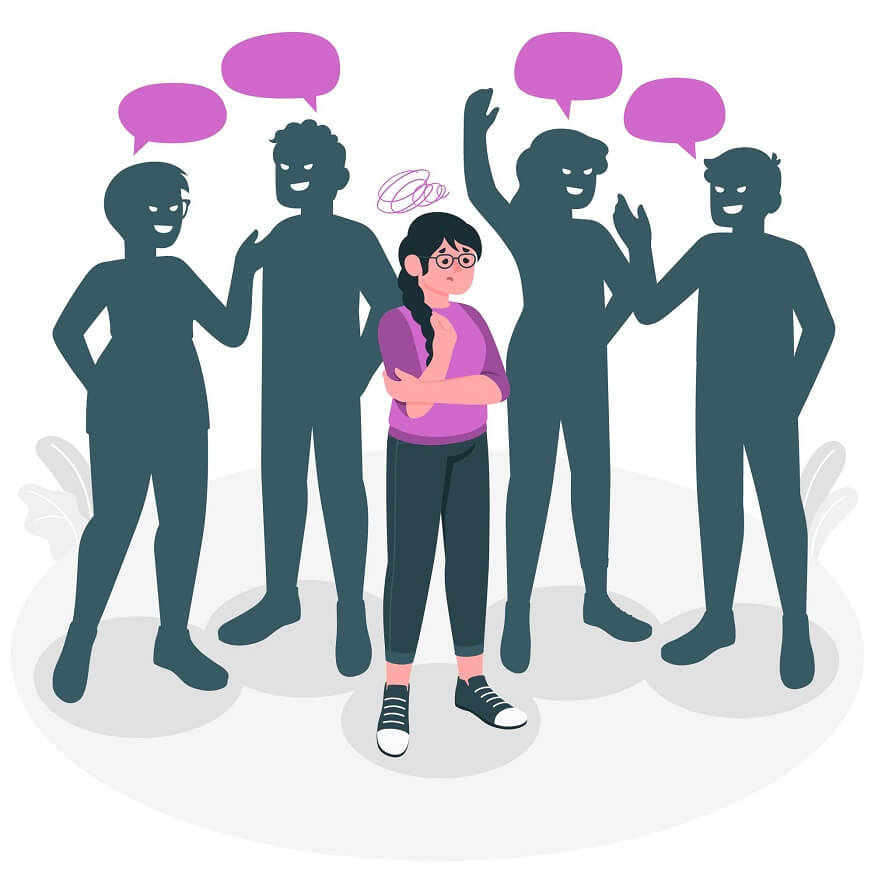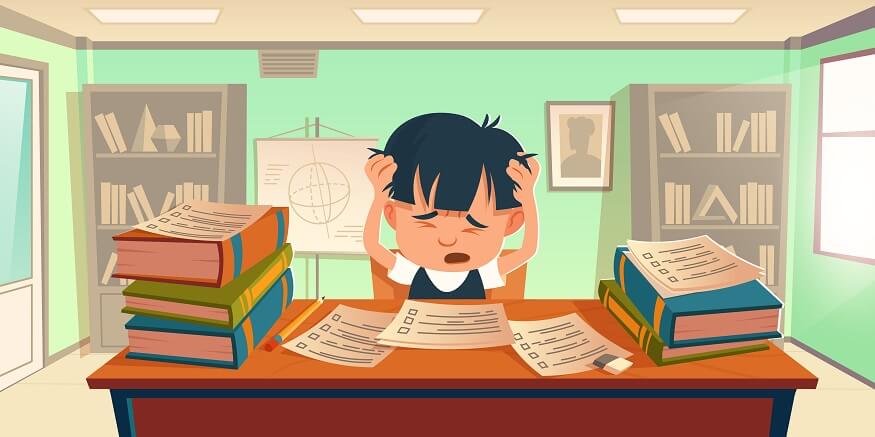Peer pressure is the phenomenon where an individual feels ‘pressured’ into doing something purely because most others in the peer group are doing the same. Peers are typically those individuals that fall into the same social group. Examples of peers could be classmates, playmates, friends, colleagues, and sometimes even relatives and cousins. Peer pressure has been found to significantly influence the behaviour of individuals towards doing things which they may be resistant to under normal circumstances. Technically the term peer pressure does not necessarily carry a negative connotation. For example, a lot of teenagers join a health club out of peer pressure which might be good for their health. However, the broad concern for children is especially around the undesirable effects of peer pressure which can even lead to serious vices such as drugs or alcohol.
In this blog, we will look at the types of peer pressure, some examples, and ways of how to deal with it. Peer pressure in general can be of the following types:
- Explicit Peer Pressure
- Implicit Peer Pressure
- Positive Peer Pressure
- Negative Peer Pressure
- Direct Peer Pressure
- Indirect Peer Pressure
As the name suggests, explicit peer pressure occurs when your peers verbally pressure you into adopting a behaviour which you may otherwise resist. For example, a peer pushing you to have a drink or try a puff of a cigarette by explicitly pushing you to by saying something like, “C’mon, be a man and have one!”
Implicit peer pressure occurs when your peers want to pressurise you towards a behaviour, but they do not do it explicitly, but by implicitly creating situations that lead you into it. For example, inviting you to frequent parties where others are indulging in smoking, alcohol, and drugs. Now, they may not explicitly ask you to, but by consciously inviting you and engaging in those things they might try to indirectly lure you into following suit.
As already highlighted above, technically peer pressure may not always be bad. For example, if you have a sincere and hardworking peer group, they might pressure you to work equally hard on your studies which might lead to good academic performance. The construct of the peer group becomes important in driving positive peer pressure.
We have seen ample examples of bad social circles leading to negative peer pressure. Most cases of addiction to vices such as smoking, alcohol, or drugs have been found to initiate through negative side effects of peer pressure.
Direct peer pressure is in many ways similar to explicit peer pressure. In such cases, the peer pressure is directed specifically towards the individual. It might take explicit or implicit forms, but the target is the individual to influence their behaviour and choices.
Indirect peer pressure is when your peers don’t explicitly or implicitly suggest you follow a particular behaviour, but you feel pressured to because of the environment, or as may be “everyone is doing it” and you might feel left out if you do not. Nobody is singling you out in this case. It just happens out of natural occurrences. For example, those who indulge in smoking or drinking usually hang out and have fun together. Sometimes this gang is seen to be the ‘cool gang’ at school and college. Those kids who do not smoke or drink feel left out of the cool boy’s gang. Hence, to feel part of the cool gang, they also take up smoking or drinking, without anyone explicitly asking them to. A lot of such indirect peer pressure takes place during traditional events such as new year parties, college farewells etc where you are expected to consume alcohol etc as a tradition.
Implications of Peer Pressure
Peer pressure may not always be about smoking, alcohol or drugs. Following are some other behaviours that are usually seen to be adopted via the peer pressure route.
- Fashion sense
- Aggressive/Irreverent/Rebellious behaviour
- Bullying
- Vandalism/Activism
- Anti-establishment
- Cult following
- llowing certain ideologies (e.g., communism, vegan, etc)
- Engaging in dangerous games/activities (for example the Blue Whale Challenge, an online suicide game that became hugely popular among teenagers and led to the suicide of many kids)
In some cases, peer pressure can lead to extremely disastrous implications such as:
- Addictions
- Smoking, alcohol, drugs, etc.
- Gambling
- Sex
- Internet
- Shopping
- Video games
- Accidents
- Alcohol or drug overdose
- Asphyxiation
- Drinking and Diving
- Sexually transmitted diseases
Also Read: Teenage Stress: Causes, symptoms, stress management
How to deal with peer pressure?
As the name suggests, peer pressure originates out of the peer group that you keep. Thus, if you want to manifest positive peer pressure then be part of a positive peer group. Pick your social circle such that your peers have good habits which can positively rub on you. Keep negative elements away from your social circles. Leave those social circles which have been infested with negative and undesirable elements. Parents also have a strong role to play here in ensuring their kids are part of peer groups which promote good habits. It is important to monitor the social circle kids are engaging with, both in offline and online settings. Most of the undesirable peer elements these days are found on the internet.
Engaging in positive activities such as sports, music, art, and other value-adding cultural activities could keep the child busy and engaged and in a positive frame of mind. A busy mind will not have much time to think about it. Sports and other extracurricular activities also help build self-esteem and confidence in children which helps them in ignoring negative peer pressure.
A positive and supportive home environment is also a key influence to counter negative peer pressure. In a way, the positive family influence needs to be built up to counter the negative peer influence. A value-based education at school coupled with reinforcement at home can work wonders in overcoming the negative examples of peer pressure.
Also Read: The Importance of Respect and Obedience Towards Teachers and Peers
At EuroSchool we give emphasis on countering negative peer pressure and fostering positive peer pressure among our students. Our educators are experts in identifying negative peer influences and devising strategies to counter the same. We follow value-based education methods to imbibe high moral values and ethics among our students which arms them in fighting against any negative influences emerging out of their social circles.










